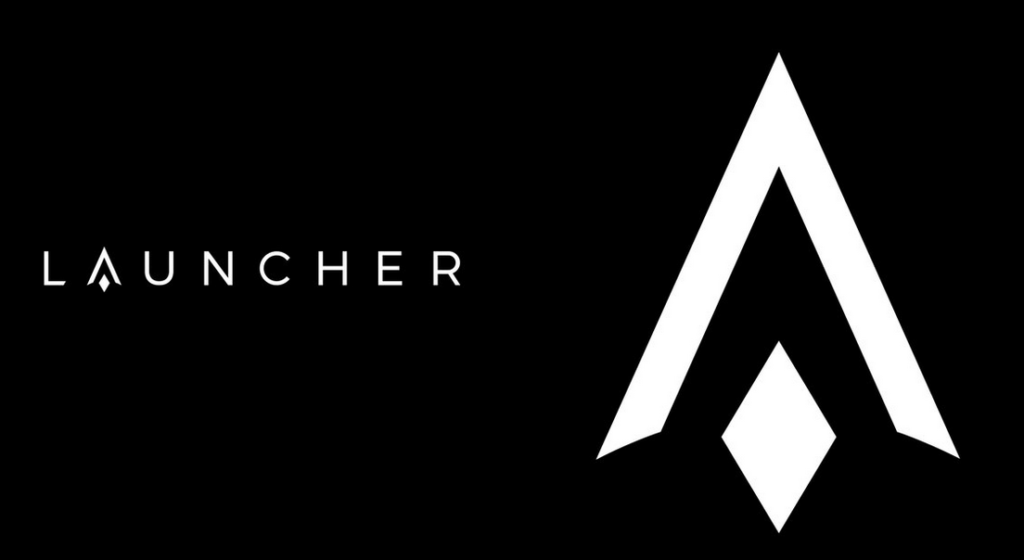Amid growing competition in the potentially lucrative small launch vehicle segment, startup Launcher Space has raised $11.7 million in a Series A round of funding led by company CEO and Founder Max Haot, driving the total investment to more than $15 million. The investment will help Launcher scale its team and accelerate the development of its first orbital vehicle, the Launcher Light, set to begin flying commercially in 2026. As part of the announcement, the four-year-old company also revealed a new logo. The sleek design symbolizes its orbital rockets, the mach diamonds of Launcher’s high-performance engines, and Earth.
Since being founded in 2017, Launcher has focused on high performance at low cost, hoping to differentiate its business proposition from the pack by creating the world’s largest 3D printed liquid rocket engine. Through partnerships with additive manufacturing (AM) companies like AMCM and VELO3D, it is designing and manufacturing critical rocket parts, reducing costs and enabling high-performance regenerative cooling designs.
The “small satellite launch startup underdog,” as Haot referred to Launcher in a recent social media post, is “rising and accelerating” thanks to its latest funding. However, during an interview with Ars Technica, Haot highlighted that although the investment round did well above its $7 million goal, “compared to our competitors, we are in the kindergarten of fundraising.” In fact, other startups in the same small launch class have already received serious backing from investors, including Orbex with more than $66 million in funding, ABL Space Systems, which has already brought in over $239 million, and Rocket Lab’s $288 million.
Launcher’s E-2 liquid rocket engine test stand at NASA Stennis Space Center facility in Mississippi. Image courtesy of Launcher.
An active small rocket manufacturing ecosystem set to deliver small satellites to orbit in the coming decade is expected to surge despite some experts pointing towards a lower than expected demand. With160 businesses developing small satellite launchers, the race to commercial space flight will be fierce. In preparation, Haot had recently announced the company would focus on its new rocket design, the Launcher Light, expected to begin commercial service by 2026. The new rocket model will deliver less payload capacity than the startup’s originally planned small launch vehicle, the Rocket-1, which was expected to place up to 1,704 pounds (773kg) into low Earth orbit (LEO). Instead, Launcher Light looks at a payload capacity of 330 pounds (150kg) to LEO.
To meet its goals, Haot said the company needs to grow significantly. Part of the plan includes a relocation from its test facility on Long Island’s Naval Weapons Industrial Reserve Plant (where the US jetfighter F-14 Tomcat used to be assembled), in New York City, to its new Hawthorne 24,000 sq. foot headquarters and factory in Southern California, right next to pioneering giant SpaceX. To scale its team, the startup is actively recruiting for several positions at its new site, looking to increase its personnel, especially engineers for its avionics team. Launcher currently has about 30 employees in the United States and at its research and development subsidiary in Ukraine, with plans to scale up to about 70 employees by the end of this year.
Illustrations of Launcher’s new 24,000 square foot headquarters being built out with design offices and a factory floor with CNC machining and Launcher engine 3D printers. Image courtesy of Launcher.
Haot also revealed in the interview that the company would need to spend about $10 million a year to reach orbit by 2024 with Launcher Light. That’s a big difference from its first four years, during which the focus was on developing a first-stage rocket engine, and the company had just a handful of employees, spending just $1.5 million per year. By the time of its first orbital flight, Haot said the company would probably need to reach about 150 employees and a total budget of $50 million, supported by an additional round of funding expected to be complete by early next year.
Following up on a decade-long plan to build launchers that will “win the small rocket race,” Haot is very optimistic about the company’s future. As part of the Series A funding round that closed in early June 2021, he invested $5 million of his own money from the recent sale of his Mevo camera business to Logitech. Additionally, just last month, we heard Launcher had developed a 3D printed liquid oxygen (LOX) turbopump created with specialized turbomachinery engineering software from Ansys and VELO3D’s metal AM solutions.
Launcher E-2 liquid engine 3D printed LOX turbopump ready for testing at NASA Stennis center. Image courtesy of Launcher.
The turbopump was successfully tested at the NASA Stennis Space Center facility in Mississippi, where Launcher signed a Space Act Agreement to use the E-1 test stand at the center for engine tests. The success of the 3D printed LOX pump will play a critical role as the company advances, considering the work is part of the startup’s strategy to perfect its E-2 engine, which is expected to power the Launcher Light and is currently in development, being optimized for mass production and low cost.
